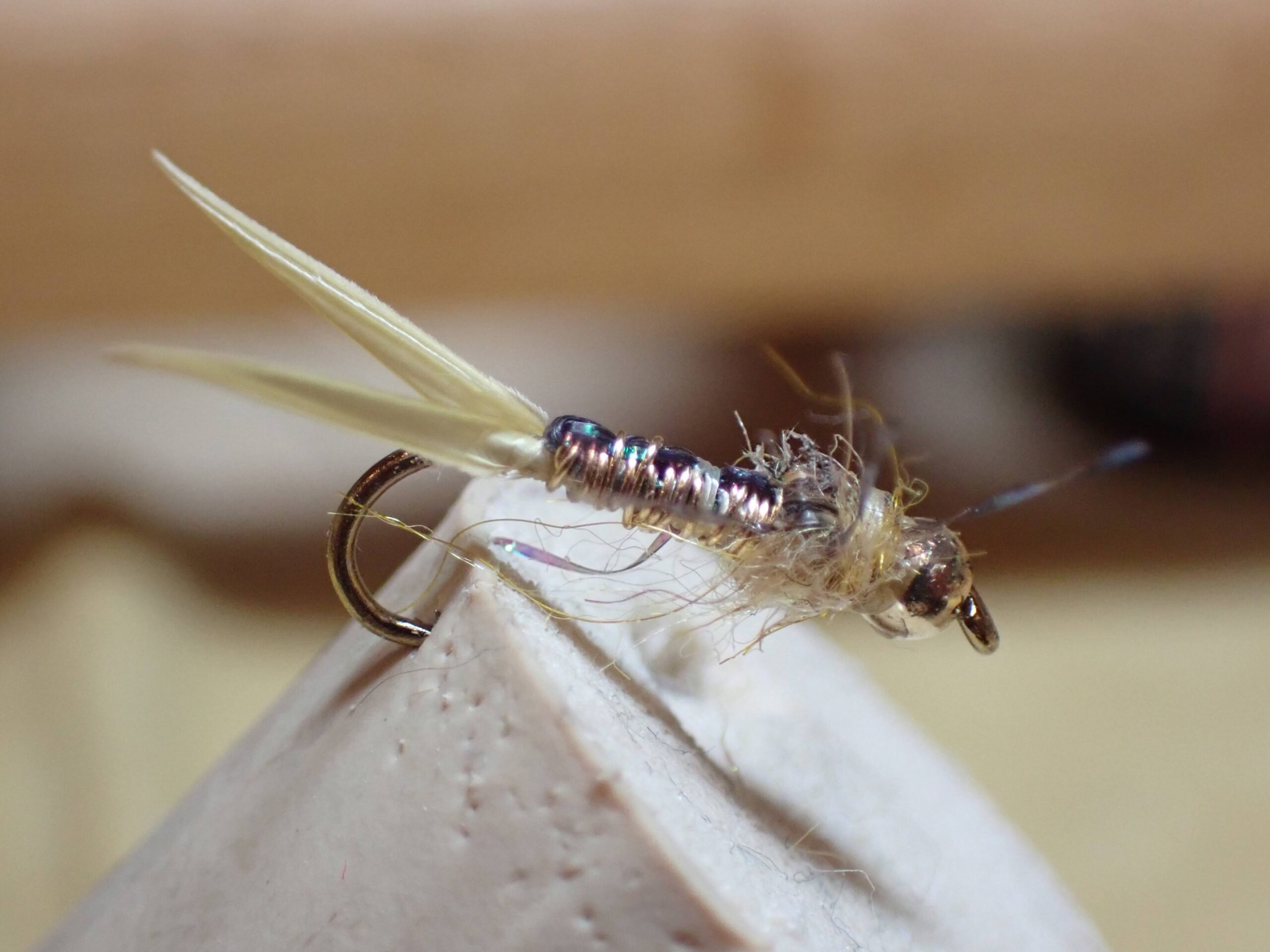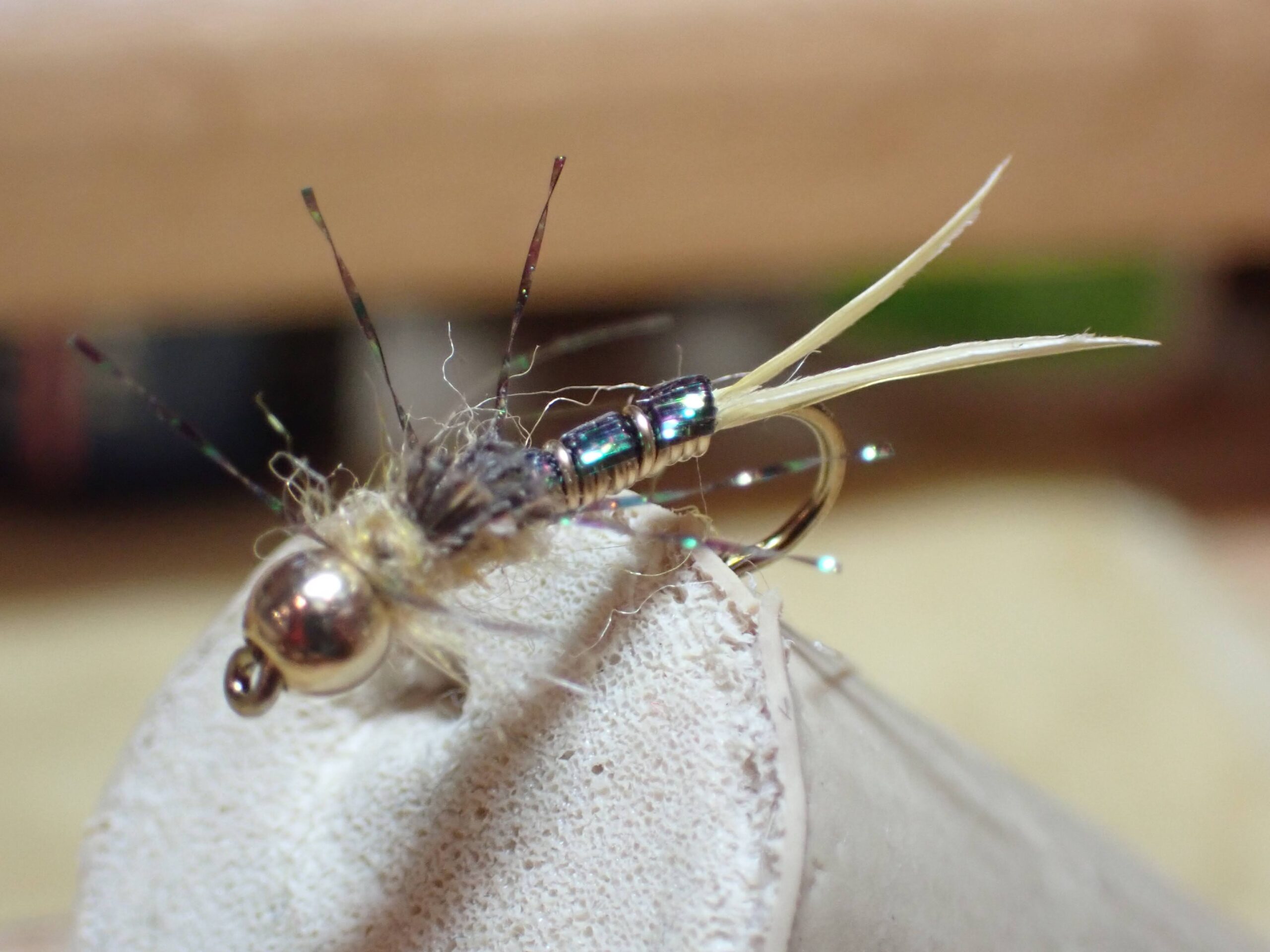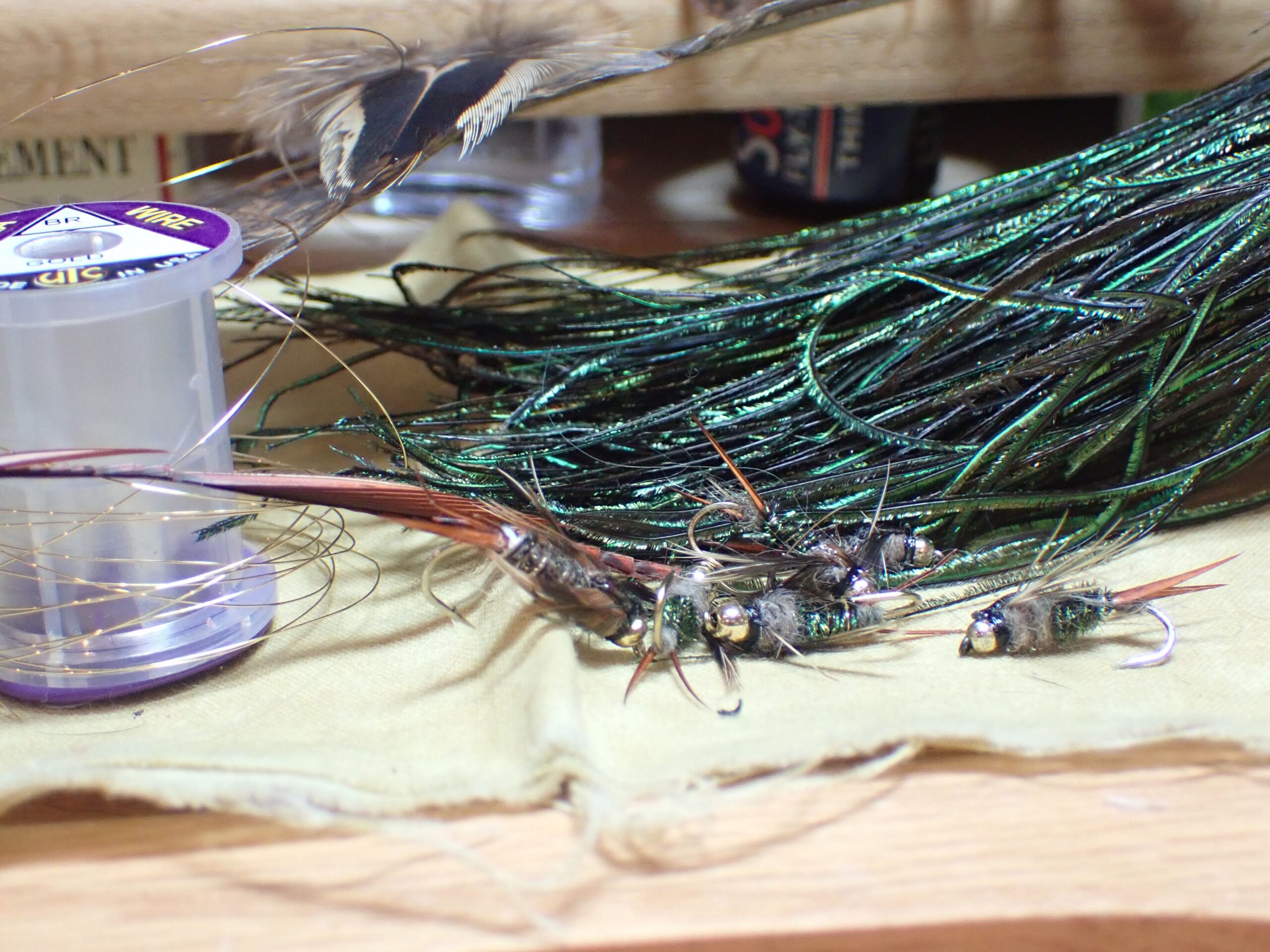Supernova PMD 01/01/2025 Photo Album
My post of 12/12/2023 provides a brief description of my usage of the Supernova PMD. As stated in that post, I stopped tying pheasant tail nymphs and replaced them with salvation nymphs and the supernova PMD nymph. The supernova nymph is much easier to tie than the pheasant tail, which uses fragile pheasant tail fibers for the tail, abdomen and wing case. In spite of my desired abandonment of the pheasant tail,
I resorted to them quite often in 2024, and consequently I did not deplete my supply of the supernova to any significant degree. Nevertheless, I tied five additional imitations to add to my inventory along with refurbishing one pheasant tail nymph that was unravelling. For two of my new ties, I modified the Juan Ramirez recipe. I replaced the thread abdomen with a fine light gray dubbing, and I added a flashback black over-wing that ran over the top of the abdomen and extended as a wing case. I like the look of these quite a bit.
 Variant with Gray Body and Flashback Black Wing Case
Variant with Gray Body and Flashback Black Wing Case
Below is a table with the materials recipe provided by Juan Ramirez:
| Fly Component | Material |
|---|---|
| Hook | Tiemco 2487 Size 14 |
| Bead | Red glass bead or tungsten |
| Thread | Light Brown |
| Tail | Brown fibers |
| Rib | Brown slim rib |
| Abdomen | Light brown thread |
| Thorax | Simon peacock red no. 5 or similar |
| Legs | Brown microlon |
 Batch of Six Including Refurbished Beadhead Pheasant Tail Nymph
Batch of Six Including Refurbished Beadhead Pheasant Tail Nymph
Below is my adaptation of the Ramirez pattern.
| Fly Component | Materials |
|---|---|
| Hook | Size 16 curved nymph hook |
| Thread | 6/0 brown |
| Tail | Brown hackle fibers |
| Body | 6/0 brown |
| Rib | Brown slim rib |
| Thorax | Peacock ice dub |
| Legs | Black krystal flash |

 Freshly Minted Supernova PMD
Freshly Minted Supernova PMD Size 12
Size 12 Size 14
Size 14 Materials and Completed Flies
Materials and Completed Flies Angled Emerald Caddis Pupa
Angled Emerald Caddis Pupa A Group of Three New Flies
A Group of Three New Flies New Go2 Caddis Pupa
New Go2 Caddis Pupa Three Go2 Caddis Pupa Added to Iinventory
Three Go2 Caddis Pupa Added to Iinventory Not Bad for an Early Attempt
Not Bad for an Early Attempt A Batch of Five
A Batch of Five Small Version
Small Version Size 12
Size 12 A Batch of Eight Awaiting Storage
A Batch of Eight Awaiting Storage Classic 20 Incher
Classic 20 Incher Additions to Inventory and Materials Required
Additions to Inventory and Materials Required One More Ultra Zug Bug
One More Ultra Zug Bug One Bug Plus Materials
One Bug Plus Materials Scraggly the Way I Like Them
Scraggly the Way I Like Them Necessary Materials and Completed Batch
Necessary Materials and Completed Batch


